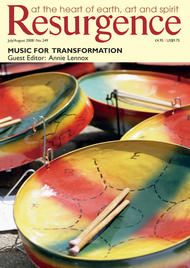THE BLACK MASS is the Christian Mass performed backwards. John Gray’s new book demonstrates how the perversion, or inversion, of the Christian myth of the Apocalypse and the eschatological thinking – the idea of an ‘End Time’ – that pervades this myth were exploited throughout the 20th century with the promise of the coming Utopia. The followers of Marxism, Leninism, Stalinism, Nazism, Maoism, the American neo-cons or free-marketeers, and radical Islamists all have their vision of heaven on Earth and in order to achieve these visions have waged war and terror throughout the century on an ever-increasing scale.
Gray’s thesis is that these 20th-century totalitarian ideologies sprang from the apocalyptic tradition that was deeply rooted in medieval Christian Europe. The medieval millenarianists who believed in the end of history as the Book of Revelation prophesied found hope in the promise of an Earthly paradise and the destruction of their enemies.
The wild ravings and violent acts of the millenarianists – the Anabaptists and the Flagellants – were the products of a superstitious pre-scientific worldview. How can such beliefs have any connection with modern Western society, grounded as it is in the scientific rationalism of the Enlightenment? Gray’s view is that the bloodstained history of the 20th century should be seen as the continuation of the Christian apocalyptic tradition and that the Enlightenment made this tradition even more dangerous by enriching it with the products of human reason.
This is the most controversial aspect of Gray’s challenging book. He draws heavily on the American historian Carl Becker’s book The Heavenly City of the Eighteenth-Century Philosophers, published in 1932. Becker argued that the 18th-century Enlightenment adopted the same myth of End Time that underpinned the Christian myth of the Apocalypse. As Christianity believed in human existence leading to the coming of the kingdom of heaven, so the Enlightenment ‘philosophies’ developed their own teleological faith in the ‘perfectibility of humanity’ and in human progress based on the advancement of science and technology. This is the End Time of the modern age. For Gray the Enlightenment was as Utopian in its outlook as is the Christian religion – and even more dangerous. He says: “Clothed in science, early Christian myths of Apocalypse gave rise to a new kind of faith-based violence.”
Gray argues that Nazism and Soviet and Chinese communism owed much to the Enlightenment. Thus, Nazism combined the mystical traditions of medieval German millenarianism with the advances of 20th-century science to create a racist ideology which would lead to a racially ‘pure’ Third Reich. Russia also aspired to Utopia – the classless society that was Marx’s End Time – and Stalin believed that through science a new kind of human being and a new form of society could be perfected. According to Gray, Russia’s misfortune was not in failing to absorb the Enlightenment but in being exposed to the Enlightenment in some of its most virulent forms.
Now at the beginning of the 21st century Gray believes that the carapace has cracked and the world is littered with the wreckage of Utopian projects. Who talks now of the Project for the New American Century which would, the neo-cons reckoned, bring the benefits of freedom, democracy and an unfettered market to the whole world? But the Apocalyptic vision remains and shapes the policies of many Western leaders as well as al-Qaeda.
Where does this bleak picture of our times leave us? Do we accept Gray’s view that in the pursuit of a vision human beings will engage in violent clashes of fundamentalism? Or does he hold out any grounds for hope? When Gray wrote Enlightenment’s Wake in 1995 he asked whether the Earth can survive. He felt then that it could but only if other modes of thinking – those that can be found in poetry and mysticism – prevailed. Thirteen years later Gray ends his brilliant but disquieting new book with a plea for human beings to free themselves from the anthropocentric myth of the Apocalypse and adopt the mystic’s path of identifying with the cosmos. I wish he had focused more on this path.
Mary Tasker is Chair of Human Scale Education.







